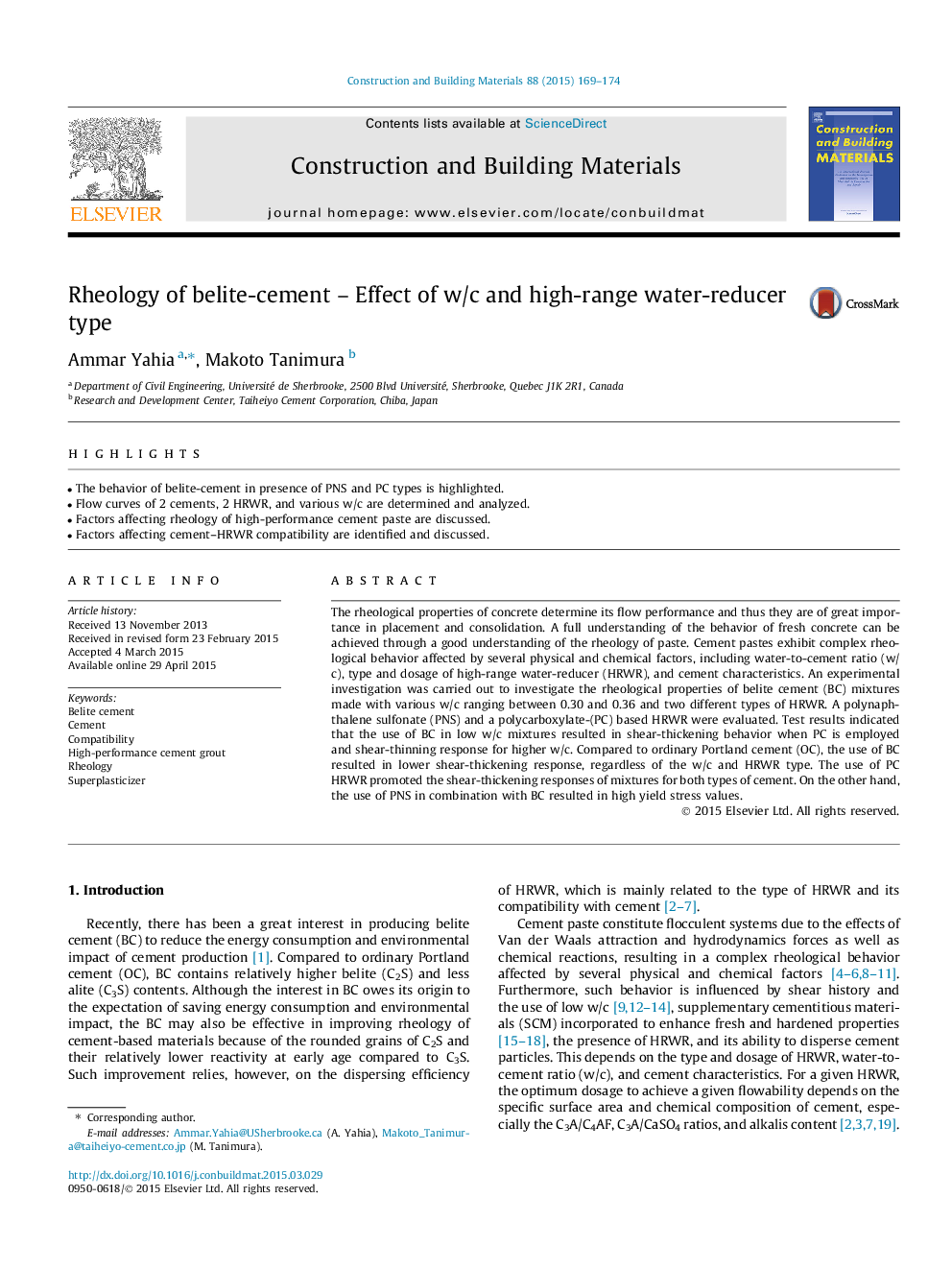| Article ID | Journal | Published Year | Pages | File Type |
|---|---|---|---|---|
| 256963 | Construction and Building Materials | 2015 | 6 Pages |
•The behavior of belite-cement in presence of PNS and PC types is highlighted.•Flow curves of 2 cements, 2 HRWR, and various w/c are determined and analyzed.•Factors affecting rheology of high-performance cement paste are discussed.•Factors affecting cement–HRWR compatibility are identified and discussed.
The rheological properties of concrete determine its flow performance and thus they are of great importance in placement and consolidation. A full understanding of the behavior of fresh concrete can be achieved through a good understanding of the rheology of paste. Cement pastes exhibit complex rheological behavior affected by several physical and chemical factors, including water-to-cement ratio (w/c), type and dosage of high-range water-reducer (HRWR), and cement characteristics. An experimental investigation was carried out to investigate the rheological properties of belite cement (BC) mixtures made with various w/c ranging between 0.30 and 0.36 and two different types of HRWR. A polynaphthalene sulfonate (PNS) and a polycarboxylate-(PC) based HRWR were evaluated. Test results indicated that the use of BC in low w/c mixtures resulted in shear-thickening behavior when PC is employed and shear-thinning response for higher w/c. Compared to ordinary Portland cement (OC), the use of BC resulted in lower shear-thickening response, regardless of the w/c and HRWR type. The use of PC HRWR promoted the shear-thickening responses of mixtures for both types of cement. On the other hand, the use of PNS in combination with BC resulted in high yield stress values.
